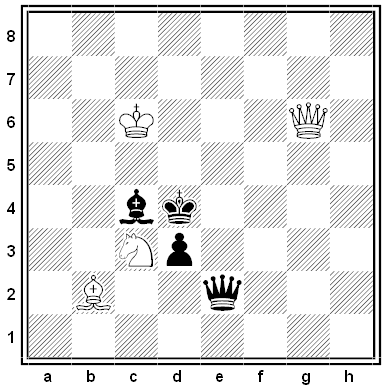Author: Greg Ross
In a Word
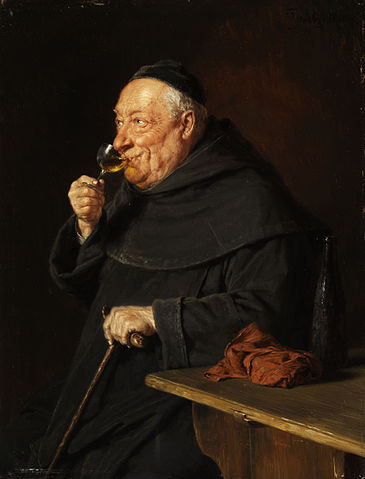
abbey-lubber
n. a monk living in idleness and self-indulgence
Chinese Magic Mirrors
During China’s Han dynasty, artisans began casting solid bronze mirrors with a perplexing property. The front of each mirror was a polished, reflective surface, and the back featured a design that had been cast into the bronze. But if light were cast from the mirrored side onto a wall, the design would appear there as if by magic.
The mirrors first came to the attention of the West in the early 19th century, and their secret eluded investigators for 100 years until British physicist William Bragg worked it out in 1932. Each mirror had been cast flat with the design on the reverse side, giving the disk a varying thickness. As the front was polished to produce a convex mirror, the thinner parts of the disk bulged outward slightly. These imperfections are invisible to direct inspection; as Bragg wrote, “Only the magnifying effect of reflection makes them plain.”
Joseph Needham, the historian of ancient Chinese science, calls this “the first step on the road to knowledge about the minute structure of metal surfaces.”
Critical Sensitivity
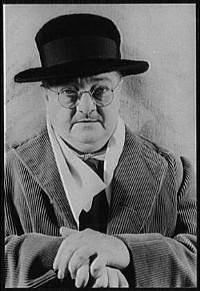
Alexander Woollcott set a world record for the shortest review of a Broadway play.
The play was titled Wham!
Woollcott’s review, in full, read “Ouch!”
Podcast Episode 49: Can a Kitten Climb the Matterhorn?

In 1950 newspapers around the world reported that a 10-month-old kitten had climbed the Matterhorn, one of the highest peaks in Europe. In this week’s episode of the Futility Closet podcast we’ll wonder whether even a very determined kitty could accomplish such a feat.
We’ll also marvel at a striking demonstration of dolphin intelligence and puzzle over a perplexed mechanic.
Turing’s Paintbrush
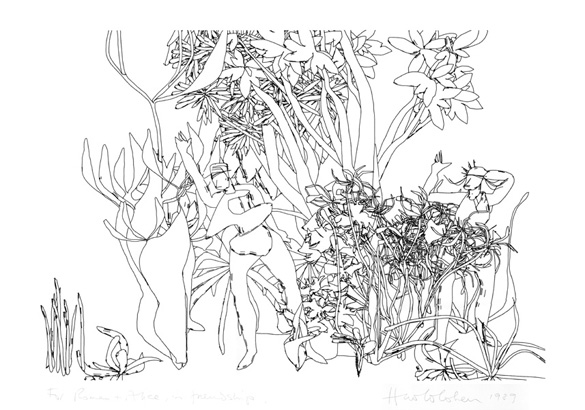
Shortly after joining the faculty of UC San Diego in 1968, British artist Harold Cohen asked, “What are the minimum conditions under which a set of marks functions as an image?” He set out to answer this by writing a computer program that would create original artistic images.
The result, which he dubbed AARON, has been drawing new images since 1973, first still lifes, then people, then full interior scenes with color. These have been exhibited in galleries throughout the world.
Carnegie Mellon philosopher David E. Carrier writes, “A majority of the viewers of AARON’s work find recognizable shapes in it; the drawing above appears to contain human figures. But AARON here used only the twenty or thirty rules it usually uses, with no special reference to human beings. Does knowing this tell us something about the structure of representation?”
Cohen asks, “If what AARON is making is not art, what is it exactly, and in what ways, other than its origin, does it differ from the ‘real thing?’ If it is not thinking, what exactly is it doing?”
“At the risk of stating the obvious, it seems to me that one of the things human beings find interesting about drawings in general is that they are made by other human beings, and here you are watching the image develop as if it is being developed by another human being. … When the drawing is finished, it functions as a human drawing. … A large part of what we value in art is not the ability of the artist to communicate special meanings, but rather the ability of the artist to present the viewer with something that stimulates the viewer’s own propensity to generate meaning.”
Unshelved
Nominations are currently open for the 2014 Bookseller/Diagram Prize for oddest book title of the year. This year’s candidates:
- Nature’s Nether Regions, by Menno Schilthuizen
- Advanced Pavement Research, edited by Bo Tian
- The Madwoman in the Volvo: My Year of Raging Hormones, by Sandra Tsing-Loh
- Where Do Camels Belong? by Ken Thompson
- Divorcing a Real Witch: For Pagans and the People That Used to Love Them, by Diana Rajchel
- The Ugly Wife Is a Treasure at Home, by Melissa Margaret Schneider
- Strangers Have the Best Candy, by Margaret Meps Schulte
Recent winners have included How to Poo on a Date, by Mats & Enzo (2013), Goblinproofing One’s Chicken Coop, by Reginald Bakeley (2012), Cooking With Poo, by Saiyuud Diwong (2011), Managing a Dental Practice: The Genghis Khan Way, by Michael R. Young (2010), and Crocheting Adventures With Hyperbolic Planes, by Daina Taimina (2009).
You can vote here. “This is one of strongest years I have seen in more than three decades of administering the prize, which highlights the crème de la crème of unintentionally nonsensical, absurd and downright head-scratching titles,” said The Bookseller‘s Horace Bent, who organizes the contest. “Let other awards cheer the contents within, the Diagram will always continually judge the book by its cover (title).”
Offside
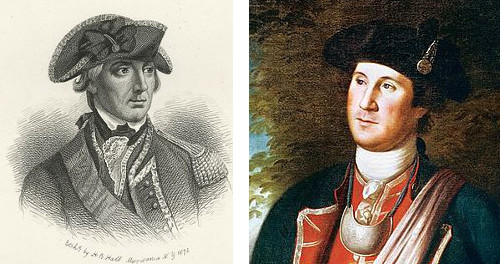
After the Battle of Germantown in 1777, an American soldier approached the British line carrying a white flag, a fox terrier, and a note:
General Washington’s compliments to General Howe, does himself the pleasure to return him a Dog, which accidentally fell into his hands, and by the inscription on the collar, appears to belong to General Howe.
An officer conveyed the dog to British general Sir William Howe:
The General seemed most pleased at the return of the dog. He took him upon his lap, seemingly uncaring that the mud from the dog’s feet soiled his tunic. Whilst he stroked the dog, he discovered a tightly folded message that had been secreted under the dog’s wide collar. The General read the message, which seemed to have a good effect upon him. Although I know not what it said, it is likely to have been penned by the commander of the rebellion.
There’s no record of what this second note said, but Sir William later referred to the incident as “an honorable act of a gentleman.”
(Caroline Tiger, General Howe’s Dog, 2005.)
A Tidy Theorem
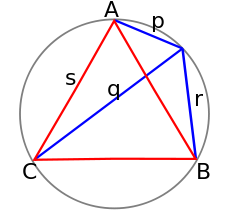
If an equilateral triangle is inscribed in a circle, then the distance from any point on the circle to the triangle’s farthest vertex is equal to the sum of its distances to the two nearer vertices (above, q = p + r).
(A corollary of Ptolemy’s theorem.)
Three-Cornered Baseball
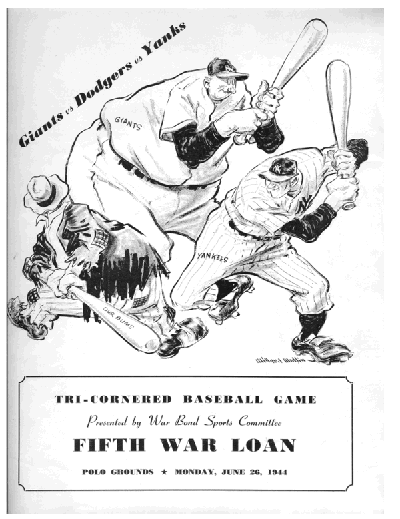
In 1944, eager to help the war effort, a group of New York sportswriters arranged a three-way baseball game among the Brooklyn Dodgers, the New York Yankees, and the New York Giants. The teams took turns batting, fielding, and sitting so that each played a total of six innings, under a scheme concocted by Columbia University math professor Paul A. Smith:

Leo Durocher managed the Dodgers, Joe McCarthy the Yankees, and Mel Ott the Giants. The Dodgers showed a strange talent for this sort of play, winning 5-1-0 and shutting out the Giants entirely. The game “drew a gathering of 50,000, which included 500 wounded service heroes,” reported the New York Times, whose Byzantine box score is reproduced here.
“It helped swell New York’s war bond quota by approximately $56,500,000, and it also demonstrated that no matter how much you may strive to complicate things, the Dodgers, who still insist on doing things in their own fashion, will invariably continue to find their way around.”

